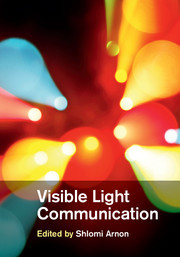Description
Visible Light Communication
Coordinator: Arnon Shlomi
This book sets out the theoretical principles of visible light communication (VLC), and outlines key applications of this cutting-edge technology.
Language: English
Subjects for Visible Light Communication:
Publication date: 03-2015
224 p. · 18.7x26.8 cm · Hardback
224 p. · 18.7x26.8 cm · Hardback
Description
/li>Contents
/li>Biography
/li>
Visible light communication (VLC) is an evolving communication technology for short-range applications. Exploiting recent advances in the development of high-power visible-light emitting LEDs, VLC offers an energy-efficient, clean alternative to RF technology, enabling the development of optical wireless communication systems that make use of existing lighting infrastructure. Drawing on the expertise of leading researchers from across the world, this concise book sets out the theoretical principles of VLC, and outlines key applications of this cutting-edge technology. Providing insight into modulation techniques, positioning and communication, synchronisation, and industry standards, as well as techniques for improving network performance, this is an invaluable resource for graduate students and researchers in the fields of visible light communication, optical wireless communication, and industrial practitioners in the field of telecommunications.
1. Introduction Shlomi Arnon; 2. Modulation techniques under lighting constraints Jae Kyun Kwon and Sang Hyun Lee; 3. Performance enhancement techniques for indoor VLC systems Wen-De Zhong and Zixiong Wang; 4. Light positioning systems (LPS) Mohsen Kavehrad and Weizhi Zhang; 5. Visible light positioning and communication Zhengyuan Xu, Chen Gong and Bo Bai; 6. The standard of visible light communication Kang Tae-Gyu; 7. Synchronization issues in high-speed VLC Shlomi Arnon; 8. DMT modulation for VLC Klaus-Dieter Langer; 9. Visible light communication using image sensors Shinichiro Haruyama and Takaya Yamazato.
Shlomi Arnon is a Professor at the Department of Electrical and Computer Engineering at Ben-Gurion University (BGU), Israel. He is a Fellow of the SPIE, a co-editor of Advanced Optical Wireless Communication Systems (2012), and has edited special issues of the Journal of Optical Communications and Networking (2006) and the IEEE Journal on Selected Areas in Communications (2009, 2015).
© 2024 LAVOISIER S.A.S.




